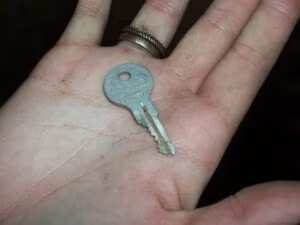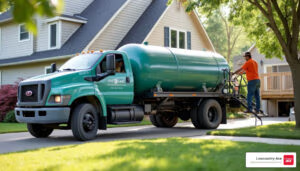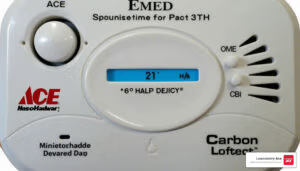When it comes to keeping your tools in tip-top shape, sharpness is key. Whether you’re a DIY enthusiast, a seasoned gardener, or someone who enjoys woodworking, having sharp tools not only makes your job easier but also ensures safety and efficiency.
Safety first: Always remember, a sharp tool is a safe tool. Dull blades can cause accidents as they require more force to cut, making them unpredictable and dangerous. Before you start the sharpening process, prioritize your safety by wearing protective gloves and goggles.
Importance of sharp tools: Sharp tools reduce the time and effort required to complete tasks. They provide cleaner cuts in gardening, precision in woodworking, and efficiency in household repairs. Plus, well-maintained tools last longer, saving you money in the long run.
Overview of the sharpening process: Sharpening your tools involves a few key steps—cleaning, inspecting for damage, selecting the right sharpening tools, and then the actual sharpening process which varies slightly depending on the tool. Whether you’re dealing with knives, garden shears, or chisels, understanding the basics will serve you well.
To encapsulate, resharp your tools to maintain their effectiveness, prolong their life, and ensure your safety. Stay tuned as we dive deeper into each aspect of the sharpening process, providing you with a comprehensive guide to keeping your tools in their best condition.
Understanding Tool Sharpness
When it comes to maintaining your tools, understanding sharpness is key. Whether you’re a professional tradesperson or a DIY enthusiast, the condition of your tools can significantly impact the quality and efficiency of your work. Let’s break down what you need to know.
Types of Tools
Broadly speaking, tools requiring sharpness fall into three categories: cutting tools (like knives, scissors, and chisels), garden tools (such as shears and spades), and woodworking tools (including planes and saws). Each type has its unique sharpening needs and techniques.
Signs of Dullness
Recognizing when a tool is dull is the first step to maintaining its sharpness. Common signs include:
- Difficulty in cutting or more effort needed to make a cut.
- Tearing or shredding instead of a clean cut.
- Visible nicks or flat spots on the edge.
- A shiny reflection from the blade’s edge, indicating bluntness.
Impact on Performance
Dull tools not only make your job harder but can also affect the outcome of your work. They can cause:
- Poor quality cuts: Jagged, imprecise cuts in materials.
- Increased risk of accidents: More force means less control, leading to potential slips and injuries.
- Wear and tear on the material: Exerting extra pressure can damage the material you’re working on.
Understanding these aspects of tool sharpness will help you keep your tools in top condition, ensuring they perform well and last longer. A sharp tool is a safe tool.
We’ll delve into preparing your tools for sharpening, further ensuring your safety and the longevity of your tools. Stay tuned for detailed insights on how to clean, inspect, and choose the right safety gear before sharpening your tools.
Preparing Your Tools for Sharpening
Cleaning
Before you think about sharpening, your tools need to be clean. Dirt, grime, or rust can get in the way of a good sharpening session. Start by wiping down your tools with a damp cloth to remove any loose dirt. If they’re really dirty, you might need to soak them in soapy water for a few minutes. But, remember to dry them thoroughly afterward because water can lead to rust. For garden tools, a soft-bristle brush works best to scrub off stubborn dirt—avoid wire brushes since they can damage your tools .
Inspection
After cleaning, take a close look at your tools. You’re checking for any damage like cracks, chips, or extreme wear. If a tool is damaged, sharpening it might not be safe or worth your time. Sometimes, it’s better to replace a tool than try to fix it. This step is crucial because working on a damaged tool can lead to accidents or further damage the tool.
Safety Gear
Safety should always come first. When sharpening tools, small pieces of metal can fly off, and sharp edges can lead to cuts. Always wear safety goggles to protect your eyes from metal shards. Gloves are also a good idea to protect your hands from cuts, especially when handling sharp blades. You’re working to make these tools even sharper, so they can easily cut skin if you’re not careful.
As we proceed, it’s important to keep these prep steps in mind. Clean tools mean you’re starting with a blank slate, inspection ensures you’re working on tools that are safe to sharpen, and safety gear protects you from potential hazards. Now that our tools are prepped and we’re geared up safely, let’s move on to selecting the right sharpening tools for the job.
Selecting the Right Sharpening Tools
Selecting the right tools to resharp your blades is critical. Like picking out the perfect outfit for an event, choosing the correct sharpener sets you up for success. Here’s a simple guide to help you make the best choice.
Whetstones
Whetstones are a classic choice for sharpening. They come in various grits – from coarse to ultra-fine.
- Coarse grit is great for really dull tools.
- Fine grit is for honing a blade to sharp perfection.
Using a whetstone requires a bit of skill, but with practice, you can achieve a super sharp edge. It’s like riding a bike – tricky at first but smooth sailing with a bit of practice.
Honing Rods
Honing rods, often made of ceramic or steel, don’t actually sharpen. Instead, they realign the edge of the blade. Think of them as the comb that tidies up your hair in the morning. Use a honing rod regularly to keep your tools in top shape between sharpenings.
Sharpening Steels
Sharpening steels are similar to honing rods but are designed to remove a small amount of metal from the blade, actually sharpening it. They’re perfect for quick touch-ups. It’s like using a lint roller to make your outfit look fresh without a full wash.
Electric Sharpeners
For those who want a quick, no-fuss solution, electric sharpeners are the way to go. They’re easy to use and can quickly sharpen tools without much effort from you. It’s the microwave oven of sharpening – fast and convenient.
Choosing the Right Tool
- Skill Level: If you’re new to sharpening, an electric sharpener might be the easiest start. More experienced? A whetstone offers control and precision.
- Tool Type: Delicate tools might need the gentle touch of a whetstone, while everyday kitchen knives might be fine with an electric sharpener.
- Time & Effort: Whetstones offer a meditative, hands-on experience, but they take time. Electric sharpeners are quick and effortless.
The goal is to keep your tools sharp and effective, ensuring longevity and safety. Each of these tools has its place in your sharpening toolkit, and choosing the right one depends on your specific needs and preferences.
Now that we’ve selected our sharpening tools, let’s dive into the step-by-step process of actually sharpening those tools. Whether you’re working with knives, garden tools, or woodworking tools, the right technique will ensure a sharp, efficient edge ready for any task.
Step-by-Step Sharpening Process
Knives
Angle Holding: Keeping a consistent angle between the knife and the sharpening stone is crucial. Aim for an angle of about 20 degrees for most kitchen knives.
Stroke Technique: Gently slide the knife across the stone in a smooth motion, as if trying to shave a thin layer off the stone. Do this on both sides of the blade to keep the edge even.
Testing Sharpness: Carefully and safely test the sharpness of your knife by slicing through a piece of paper. A sharp knife should cut through easily without tearing.
Garden Tools
Disassembly: For tools like pruning shears, disassemble them if possible to make sharpening easier and more thorough.
Rust Removal: Before sharpening, remove any rust with a wire brush or sandpaper. This prepares the surface for a smoother sharpening process.
Sharpening Angles: Garden tools vary in the best angles for sharpening. Shears and secateurs often work well with a 20 to 30-degree angle. Use smooth, consistent strokes.
Woodworking Tools
Flattening the Back: For chisels and plane blades, start by flattening the back side of the tool on a coarse stone. This only needs to be done once for each tool.
Working the Bevel: Sharpen the bevel of the tool, maintaining the appropriate angle (usually around 25 degrees). Move through finer grits of stone until you achieve a sharp edge.
Stropping for a Polished Edge: Finally, use a leather strop with honing compound to polish the edge. This removes any burr and gives the tool a razor-sharp finish.
Maintaining the sharpness of your tools is not just about effectiveness but also about safety. A sharp tool is predictable and requires less force to use, reducing the risk of accidents. Taking care of your tools is taking care of yourself. Happy sharpening!
For a more detailed guide on maintaining your garden tools, including the importance of oiling to prevent rust, check out our insights here.
Maintaining Your Tools Post-Sharpening
After resharping your tools, it’s crucial to keep them in top condition. This means proper storage, routine honing, and effective rust prevention. Let’s break down these steps to ensure your tools remain sharp and reliable for as long as possible.
Storage
The first step in keeping your tools sharp is storing them correctly. Avoid tossing them into a drawer or box where they can get banged up. Instead:
- Hang larger tools on hooks or pegs in a dry area to prevent damage and rust.
- Use tool chests or boxes for smaller items, with individual slots for each tool to keep them separate and protect the edges.
- Wrap or cover sharp edges with cloth or protective sleeves to maintain their sharpness and ensure safety.
Regular Honing
Honing is a quick process that doesn’t remove much metal but realigns the edge, keeping it sharp between more intense sharpening sessions. Here’s how to keep your edge:
- Frequently use a honing rod for kitchen knives. Running the blade along the rod a few times before each use can significantly extend the time between sharpenings.
- For garden tools, a quick pass with a fine file or honing stone after use can keep that sharp edge longer.
Rust Prevention
Rust not only dulls your tools but can also damage them beyond repair. Preventing rust is simpler than you might think:
- Clean tools after each use, wiping off any moisture, sap, or residue.
- Apply a light coat of oil. Mineral oil for kitchen tools and a suitable lubricant for garden tools can create a barrier against moisture.
- Store tools in a dry environment. Consider using silica gel packs in your storage boxes to absorb any excess moisture.
By following these steps, you can extend the life of your tools, ensure they’re always ready for use, and maintain their effectiveness. A well-maintained tool is a joy to use and can last a lifetime. For more tips on taking care of your tools, including the best products for rust prevention, visit Lowcountry Ace.
Frequently Asked Questions about Sharpening
What is the best angle for sharpening knives?
The best angle to sharpen knives often depends on the type of knife and its use. For most kitchen knives, a 20-degree angle on each side is ideal. This provides a good balance between sharpness and durability. However, for more delicate tasks or finer blades, a 15-degree angle might be better. It’s sharper but may need more frequent care. Always check the manufacturer’s recommendation if possible.
How often should I sharpen my tools?
How often you need to resharp your tools depends on how much you use them and what you use them for. Generally, household knives should be sharpened every few months, or whenever you notice they’re not cutting as easily. Garden and woodworking tools have a less strict schedule but should be sharpened at least once per season or after extensive use. The key is to listen to your tools; they’ll tell you when they need a touch-up.
Can I sharpen serrated blades at home?
Yes, you can sharpen serrated blades at home, but it requires a bit more care and the right tools. Unlike straight-edge blades, serrated knives need a sharpening rod that fits into their serrations. Gently run the rod through each serration, paying attention to maintain the original angle. It’s a more time-consuming process, but with patience, you can effectively keep your serrated blades sharp. If you’re unsure or uncomfortable doing it yourself, professional sharpening is always an option.
Sharpening your tools not only makes your work easier and more efficient but also prolongs the life of your tools. Whether it’s your kitchen knives, garden shears, or woodworking chisels, a well-maintained tool is a dependable one. For more detailed guides on sharpening specific tools, and to find the best sharpening products, visit Lowcountry Ace.
Conclusion
Sharpening your tools isn’t just about keeping them functional; it’s about respecting the craft, whether that’s cooking, gardening, or woodworking. Sharp tools reduce the effort you need to put in and minimize the risk of accidents caused by forcing dull blades or edges to do the job. This isn’t just about efficiency; it’s about safety, precision, and taking pride in your work.
At Lowcountry Ace, we understand the importance of keeping your tools in top condition. That’s why we encourage you to make sharpening and maintenance a regular part of your routine. Not only does this ensure your tools are always ready when you need them, but it also extends their lifespan, offering better value over time.
A sharp tool is a joy to use. It glides through tasks with ease, leaving clean cuts and smooth finishes. Whether you’re a seasoned professional or a passionate hobbyist, maintaining your tools can transform your work. And when you need advice, products, or just a bit of encouragement, Lowcountry Ace Hardware is here to help. Our knowledgeable staff can guide you to the right sharpening tools and techniques for every job. Plus, with our wide range of quality products, you’re sure to find what you need to keep your tools in prime condition.
So, take the time to resharp your tools. It’s not just maintenance; it’s an investment in your work, your safety, and your satisfaction. And whenever you need help, advice, or the right tools for the job, Lowcountry Ace has got you covered. Together, let’s keep those edges keen and your projects successful. Visit us in-store or check our online resources for all your tool sharpening needs.
Lowcountry Ace Hardware: Your one-stop shop for home improvement. We offer quality products from trusted brands and expert advice from our experienced staff. Located on James Island, visit us for tools, hardware, fishing gear, power tools, building materials, grills & smokers, electrical and plumbing supplies, and more.







